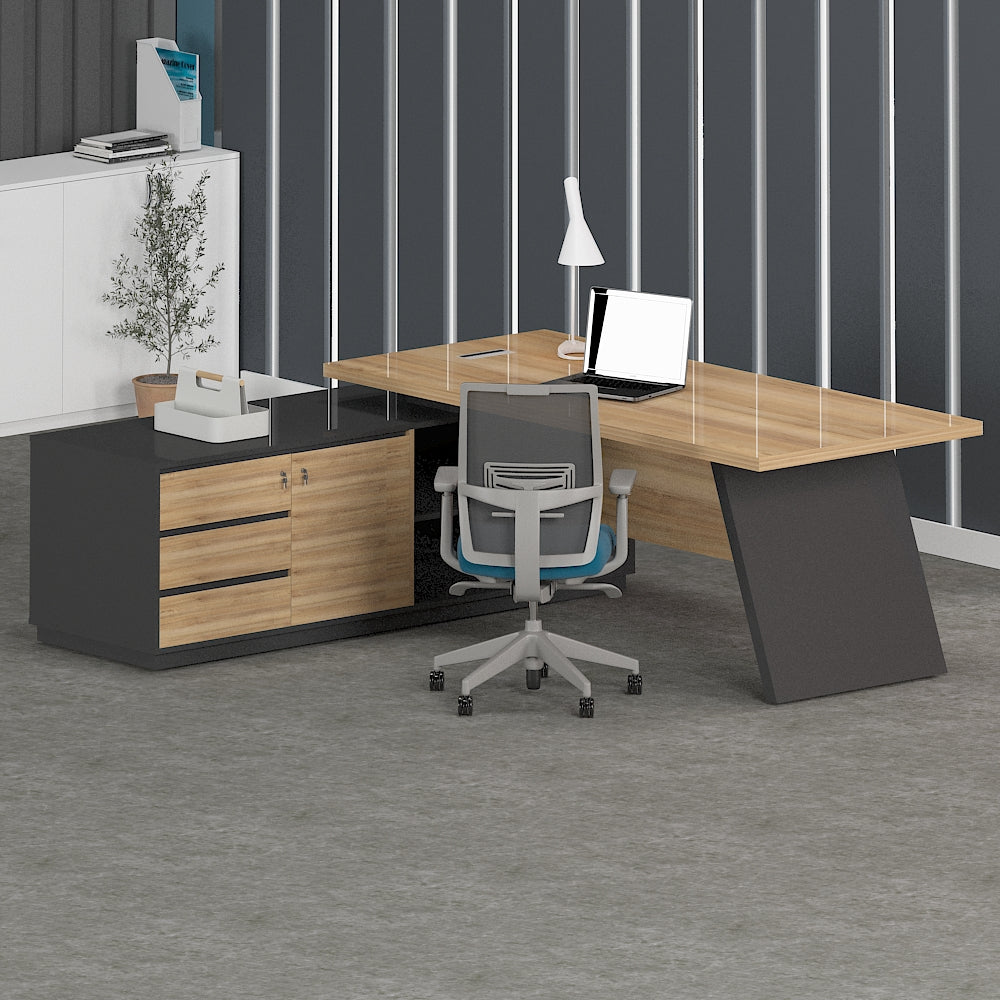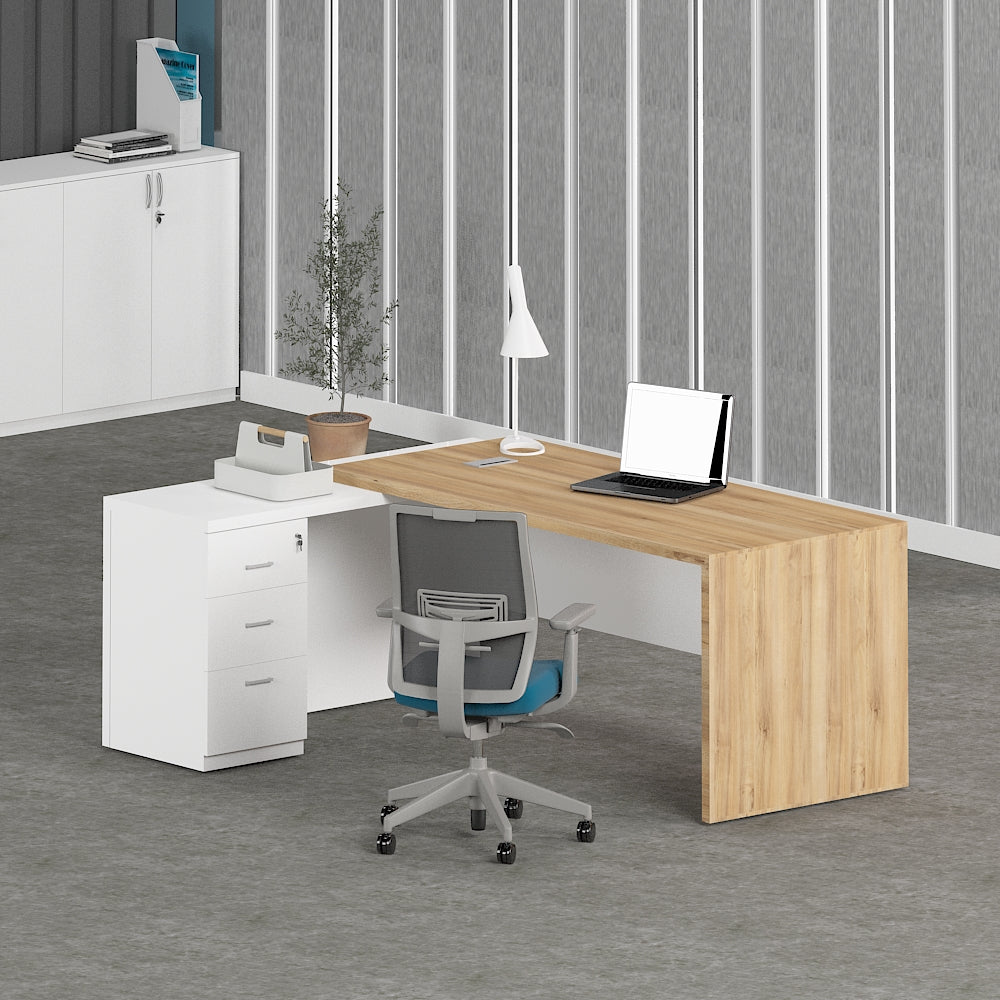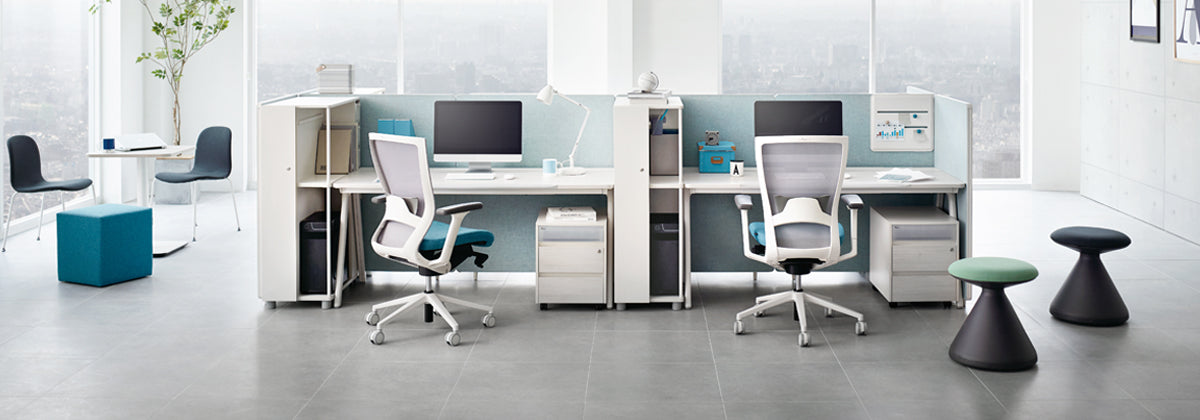Regarding furnishing an administrative office, the selection of a desk is vital. The managerial table is not just a functional piece of furniture; it embodies professionalism and authority. Among the trending styles of office tables available, L-shaped and rectangular designs are prominent. Both offers unique benefits and can significantly influence the efficiency and aesthetics of the work environment.
Recognizing the differences between these two styles can help you make an informed decision that meets your needs and complements your workspace design. From considerations like office executive table design and size to cost and material options, exploring these aspects will ensure you select the ideal table for your workspace. Regardless of whether you prefer a contemporary glass top or a traditional wooden design, this guide will explore the advantages of both corner and rectangular executive tables, helping you find the ideal centerpiece for your office.
Design Comparison
As you look selecting among angular and straight executive tables, the design plays a crucial role in determining the functionality and aesthetic appeal your office environment . L-shaped tables are frequently preferred for their spaciousness and versatility, providing more surface area for work and allowing for easy collaboration. They can fit snugly into corners, maximizing floor space while offering a workspace that can support various office tasks and activities.
On the other hand, straight executive tables exude a classic and professional look that can elevate the formal ambiance of an office. Their linear design creates a clean, organized appearance, making them suitable for traditional office setups. Straight tables are ideal for compact spaces where a more compact design is required, as they can streamline the office layout without sacrificing too much space.
Each of these designs come in an array of materials and finishes, with options such as wooden and glass tops available for each type. Office executive tables, regardless of shape, must be selected not only based on their design but also on how they align with the office's overall aesthetic and functionality needs.
Price Considerations
As you selecting an office executive table, price is frequently a vital factor that influences the decision process. The budget varies widely depending on the design, components, and manufacturer. Office executive tables can vary from budget-friendly options, typically made of particleboard or laminate, to premium models constructed from hardwood or featuring high-quality finishes. Established brands like Herman Miller usually come at a premium, showing their reputation for durability.
Additionally important aspect to consider is the pricing difference between L-shaped tables and traditional executive desks. L-shaped tables generally require a greater price due to their larger size and versatile design, which can accommodate more workspace and storage options. On the other hand, straight executive tables may be cheaper and can be suitable in small office spaces, making them attractive to budget-conscious buyers.

Finally, when assessing costs, it is essential to factor in additional expenses such as office executive table accessories and matching chairs. Coupling your executive desk with an ideal chair set can enhance your workspace's overall look and functionality. It's advisable to seek out sets that provide the best value without sacrificing on standards, ensuring a good investment for your office space.
Space Requirements
When deciding between L-shaped alongside straight executive tables, comprehending the area requirements is essential. L-shaped tables usually necessitate increased area as a result of their configuration, extending across two sides of the workspace. This configuration is suitable for spacious offices that have plenty of space open, allowing for smooth flow and additional office accessories. In contrast, straight executive tables are better suited for smaller spaces, providing a sleek appearance that maximizes functionality without crowding the space.
It is critical to evaluate the office space mindfully before choosing. Take into account the overall measurements of the area and the location of additional furnishings like office chairs and filing cabinets. An L-shaped table may offer greater surface area for work and organization, but it can also impede movement if not positioned properly. On the flip side, a straight table can deliver a direct flow, but may not offer as much desk space for paperwork and equipment.
In addition to the table type, consider the potential requirement for further items, including a side table or supplementary storage solutions. These elements should be included in the overall design to ensure that the office remains functional and neat. Ultimately, selecting the right executive table must align with the needs of the space and your personal working style.
Design and Usability


When choosing an managerial table, the balance between style and functionality is essential. L-shaped managerial tables are often preferred for their modern aesthetic and effective use of space. They provide a more expansive work surface, making them ideal for multitasking and holding various office accessories. The style can enhance the aesthetic appeal of an office while promoting productivity, as the shape allows for better organization and ease of access of materials.
On the flip side, straight managerial tables offer a more traditional and classic look, which can be advantageous in settings where professionalism and decorum are highlighted. These tables are versatile and can fit seamlessly into both modern and traditional workspace designs. https://officestore.ae/collections/executive-table allows for easy placement against walls or in open office layouts, offering ample workspace without overloading the room’s space.
Ultimately, the decision between L-shaped and straight executive tables should consider the particular needs of the manager and the complete office design. While L-shaped tables might thrive in team-oriented or multifunctional spaces, linear tables could better serve environments where a refined professional image is prioritized. Evaluating both design and usability will confirm the chosen table meets both functional needs and visual desires.
